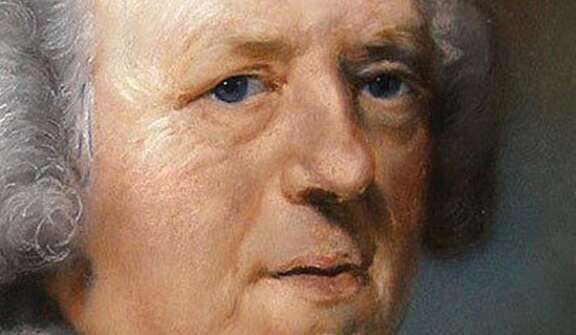From a collection of 21 letters to a Christian couple, there is an interesting piece of writing that John Newton delivers to his friends. His first lines in this particular letter set him up for this “off the beaten path” prose that I find so intriguing.
Early in the letter Newton notes that when he receives letters from the husband of this couple that the paper that has been written on “is perfumed with the name of Jesus.” Newton declares that he himself also like to speak about Jesus, but shares a frustration: “But, alas! while I endeavor to persuade others, that he is the chief among ten thousand, and altogether lovely—I seem to be but half persuaded of it myself; I feel my heart so cold and unbelieving.” It seems to be this very line that propels him into this intriguing section of the letter in which Newton writes of an imaginary portrait.
I am not going to comment on this part of a letter by Newton; I simply want to share it with you and then share the Scripture passage which gives meaning to his writing.
“Did you ever see my picture? It has been drawn by a masterly hand. And though another person, and one whom I am far from resembling, sat for it, it is as like me as one new nickel is like another. The original was drawn at Corinth, and sent to some people of distinction at Rome. Many copies have been taken, and, though perhaps it is not to be seen in any of the London print-shops, it has a place in most public and private libraries, and I would hope in most families. I had seen it a great many times before I could discover one of my own features in it; but then my eyes were very bad. What is remarkable, it was drawn long before I was born—but, having been favored with some excellent eye-salve, I quickly knew it to be my own. I am drawn in an attitude which would be strange and peculiar, if it was not so common with me—looking two different and opposite ways at once, so that you would be puzzled to tell whether my eyes are fixed upon heaven or upon the earth; I am aiming at things inconsistent with each other at the same time, so that I can accomplish neither. According to the different light in which you view the picture, I appear to rejoice—and to mourn; to choose—and refuse; to be a conqueror—or a captive. In a word, I am a double person; I am a riddle—it is no wonder if you know not what to make of me, for I cannot tell what to make of myself. I would—and I would not; I do—and I do not; I can—and I cannot. I find the hardest things easy—and the easiest things impossible. But while I am in this perplexity, you will observe in the same piece a hand stretched forth for my relief, and may see a label proceeding out of my mouth with these words, "I thank God, through Jesus Christ, my Lord." The more I study this picture, the more I discover some new and striking resemblance, which convinces me that the painter knew me better than I knew myself!”
The imaginary portrait of himself that Newton refers to was drawn by the Apostle Paul in the book of Romans.
Romans 7:15-20 ESV 15 For I do not understand my own actions. For I do not do what I want, but I do the very thing I hate. 16 Now if I do what I do not want, I agree with the law, that it is good. 17 So now it is no longer I who do it, but sin that dwells within me. 18 For I know that nothing good dwells in me, that is, in my flesh. For I have the desire to do what is right, but not the ability to carry it out. 19 For I do not do the good I want, but the evil I do not want is what I keep on doing. 20 Now if I do what I do not want, it is no longer I who do it, but sin that dwells within me.




Leave a Comment